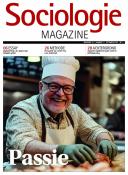
Redacteur Sociologie Magazine ontvangt kwart miljoen subsidie voor onderzoek
 Jan Kornelis Dijkstra, verbonden aan de Rijksuniversiteit Groniningen én redacteur van Sociologie Magazine, ontvangt van de NWO een subsidie van €250.000,- voor zijn onderzoek. Het onderzoek gaat over invloedsprocessen onder jongeren op het gebied van risicogedrag.
Jan Kornelis Dijkstra, verbonden aan de Rijksuniversiteit Groniningen én redacteur van Sociologie Magazine, ontvangt van de NWO een subsidie van €250.000,- voor zijn onderzoek. Het onderzoek gaat over invloedsprocessen onder jongeren op het gebied van risicogedrag.
Tijdens de adolescentie raken jongeren vaak betrokken bij risicogedrag, zoals roken, drinken, en delinquentie. Beïnvloeding door leeftijdsgenoten speelt hierbij een cruciale rol. Maar hoe werken invloedsprocessen? Wie beïnvloedt wie en waarom? Dit onderzoek tracht antwoorden op deze vragen te vinden.
Een iets uitgebreidere samenvatting leest u hier:
Summary of research proposalRisk behaviors, such as smoking, drinking, drug use, and delinquency, rapidly increase in adolescence. It is widely known that these behaviors emerge in the peer context, in which adolescents are subject to peer influence processes. Surprisingly, relatively little is known about how these peer influence processes actually take place. What motivates adolescents to imitate the risk behaviors of their peers? Who imitates whom? Does this work similarly for all adolescents? I propose that imitation of peer behavior is driven by a desire to improve one’s belonging and status in the peer group. These processes have been neglected in peer influence research so far. A belonging mechanism predicts that peer imitation is more likely for adolescents who are marginal in their peer group but still believe themselves to be attractive as friends (i.e., holding ‘positive illusions’). A status mechanism predicts that high-status peers are role models for adolescents, who are embedded in the peer group but feel superior to their peers. Whether imitation results in risk behaviors depends on the extent to which adolescents perceive themselves as undervalued by adults in the light of their biological maturation (maturity gap). Integrating the maturity gap as a powerful but yet untested explanation for the attractiveness of risk behaviors for adolescents with both mechanisms, yields three distinct implications: which adolescents are at risk for escalation in risk behaviors; what kind of peer pressure adolescents are exposed to; what types of risk behaviors are imitated. The use of advanced longitudinal social network modeling will allow examination of influence processes and the proposed mechanisms that steer changes in adolescent risk behaviors. A longitudinal short-interval data collection is planned among adolescents in secondary education. This project will contribute to our understanding of the underlying mechanisms of peer influence in adolescent risk behaviors.


